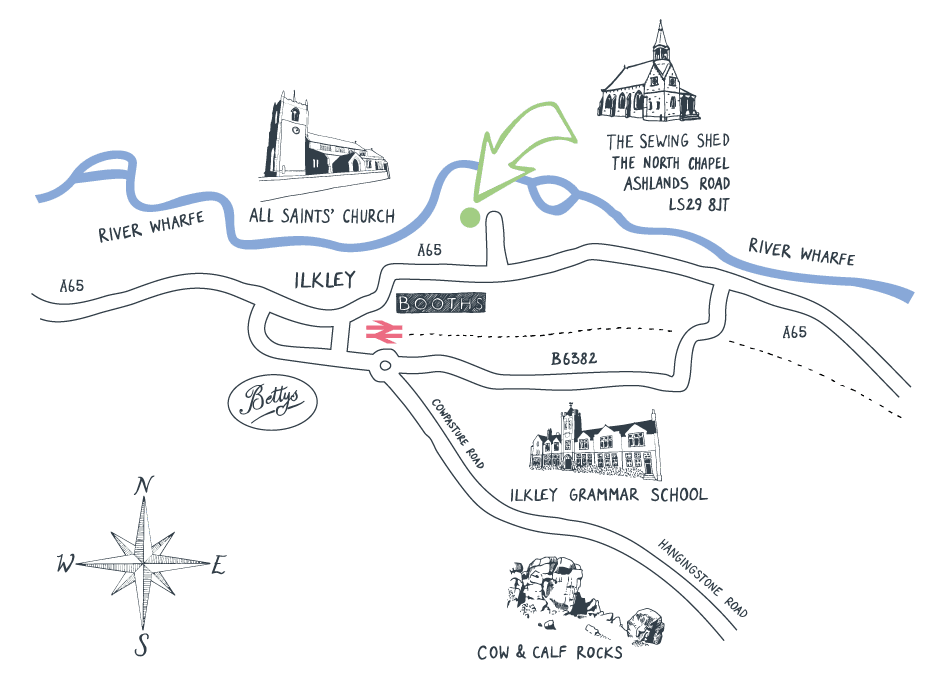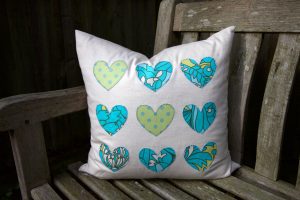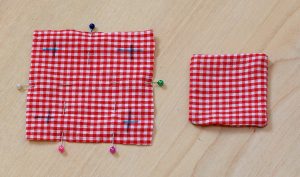
Address: The North Chapel, Ashlands Road, Ilkley, LS29 8JT





Many students ask me to recommend a good reference sewing book for them and this is one I consider to be my sewing bible: Readers Digest Complete Guide to Sewing. Produced for the home sewer it is still as relevant today as when it was first published in 1978. It’s still in print and you can pick one up in a national chain of newsagents/book stores that grace most UK high streets. However, I urge you to scour the bookshelves of your Mother, Granny,Great Aunt or friendly neighbour or local charity shop to save your pennies to buy beautiful fabrics instead – indeed on one online marketplace the postage was more than the cost of the book itself, so there a plenty of copies out there.
The early editions might well be a little outdated with their list of sewing essentials and fashion photographs, and of course computerised machines or overlockers don’t get a mention, but the easy to read chapters for advice and construction techniques in an intuitive order are a fail safe for a dressmaking guide. Interestingly in Pattern Size Guidelines it states ‘your patterns might not be the same as your ready to wear size. It does not matter; ready to wear and pattern sizes have no necessary relation to one another’!
There is even a chapter at the back of the book with Sewing Projects for the home including alterations and renovations. I would say however that my 1970s edition has out dated pages about Curtain making as curtain notions have somewhat moved on in the last forty years – but this is of little consequence as the quality step by step diagrammatical instructions for dressmaking techniques are superb.
If you are an enthusiastic home dressmaker I suggest you add this to your Christmas list if you don’t already own a copy!


September 23, 2016
Trending this week on Pinterest a pin that caught my eye ‘9 Websites to find affordable yet chic décor’ shows two sofas adorned with complimentary scatter cushions. This fits in beautifully with the start of a new term at The Sewing Shed, with many new students completing cushions within their first class, who have been delighted with their results.
Scatter cushions are a quick and effective item to sew to transform or update a room effectively. Just because it is home made doesn’t mean it wont look as spectacular as the ones in the Interiors magazines, indeed making your own home accessories can be an effective way of stretching your budget to updating your home. Its just a case of knowing a few good basic sewing techniques to give your soft furnishings that professional finish. Careful fabric choice and understanding the use of pattern are key, its also worth investing in new feather cushion pads – which can make for stunning accessories. Rooms can easily be updated for the seasons with the change of cushions and it can be a way of introducing pops of colour or an element of fun to any room. Think zebra fun fur cushion for a child’s jungle themed bedroom or textured fabric cushions in the bedroom for a cosy Autumn look. Try contrast fabrics to the front and back of the cushions for a designer look.
I recently employed Sturman&Co Interior designers to help bring together my bold ideas for my new living room and by making cushions in pop colours and complimentary Roman Blinds the scheme was completed with those professional finishing touches! I had scoured fabric remnant shops buying fabrics that caught my eye and venturing to well known ‘factory outlets’ to buy designer seconds at knock down prices. I am delighted with the results and my living room has even featured in regional and national press with the homemade scatter cushions in full view! www.sturmanco.com


September 14, 2016
Please accept my apology of posting this blog again (although updated) as at each cycle of six week classes I meet new students who have been home dressmakers who are confused by the range of patterns available to them – so I have updated the post for recent students and new sewers who have yet to discover the fun at The Sewing Shed.
Many students ask me, why are dressmaking patterns so varied in size? There is ONE main reason.
The high street was re-sized in the 1970s in the UK, as a better diet was developing larger female silhouettes and with different proportions of our mothers and grandmothers generations. Dressmaking patterns were not necessarily re-sized to take into account the more modern figures. This is why on the reverse of many patterns bought today we are one, two or even three sizes larger than our ‘usual’ high street dress size. This can be said for Simplicity, New Look, Burda, Vogue and Buterick.
For beginners learning dressmaking I recommend patterns that have been developed within the last five years, particularly Colette as these are more true to the dressmaking size that we are used to. There are also more artisan makers that sell at sewing shows and on line for example, Amy Butler, Sew Over It, Simple Sew and Tilly and the Buttons. I can personally vouch for Amy Butler, Colette and Simple Sew having used many of their patterns in my classes and I am in the process of stocking a carefully selected range of new artisan patterns; Colette, Sew Liberated, Made by Rae as well as bag patterns by Noodlehead and childrens patterns by Oliver + S and Made by Rae.
For all sewing patterns you should reach for the tape measure and use these measurements when deciding which size garment to make.
When sewing a garment you should be able to measure accurately, sew to this size, then the garment will fit and look like the picture on the pattern packet. Home dressmaking should not require a toile first or to need many fittings, i.e. putting the garment on and off, altering it to get the desired fit. For this reason I really would not recommend Merchant & Mills for the novice home sewer. 

August 21, 2016
A staggering 616 million socks go to landfill in the UK each year as households don’t know how best to recycle them. Love Your Clothes Org are encouraging everyone to extend the life of their odd or holey socks and in particular have aimed many activities at the family to help occupy the children during the holidays. Why not make an old sock into a sock puppet puppy? Recycle a stripy sock into a sock snake or that lonely old sock into a sock monkey? Here’s just a suggestion of the TOP FIVE ODD SOCK TIPS FOR THE KIDS.
1. Odd socks make great sock puppets! Recycle them for play, although they get used for dusting in our house-a great way to get the kids involved with housework and to lessen Mums load.
2. And when you sit down to play a game with your kids, you’ll be thankful you kept all those tiny plastic pieces together in an odd recycled sock. It definitely makes play time a lot easier!
3. They also make ideal sleeping bags for the little ones’ favourite toy animals, dolls or action figures.
4. If you’ve got a chalk or marker pen board that the children love to scribble all over, an odd sock makes a perfect eraser so they can wipe that board clean and get creative all over again.
5. You could also try making a hacky sack. Simply cut off about half the top part of a long sock or about three quarters for a short sock. Fill the sock with dried rice, dried peas or beads and then sew the opening together in a ball shape.
Visit www.loveyourclothes.org.uk/lost-socks to enter the family fun competitions, view activity sheets and learn more about re-cycling. There’s even an on line tutorial on how to darn your socks – I might point my Dad in that direction as he is always asking me to do that for him.


August 11, 2016
I had a bit if a shock when asked to address a local WI groups as I had totally under estimated the resurgence of the popularity of the WI organisation and when I casually enquired how many could I expect to attend was told – well about 100 to 120 participants if the topic is interesting!
I was invited to speak to the local WI group about the success of being a woman in business and building The Sewing Shed from scratch and also if I could throw in a demonstration that would be great as they also like to learn a new skill.
On the night I was faced with a church hall full of giddy (as we say in Yorkshire) ladies, who clearly don’t get out much. What I wasn’t told was that tea and cake had been replaced with wine and cake so my audience were very supportive, if not a little forward with the Q&As session and VERY enthusiastic at joining in the hands on activity for the month, if not a little tipsy! The demonstration of applying an applique onto an item brought from home was a huge success as long as I ensured the correct side of the applique paper was bonded to the fabric not the iron!


August 5, 2016
I am very proud to announce that I have been accepted to be a Love Your Clothes Super Crafter! apologies to existing students who have I have bored as I have gone through the selection process…
Love Your Clothes aims to reduce the environmental impact of clothing by raising awareness of the value of clothes. It encourages consumers to think about the way they buy, use and dispose of their clothing. Every year an estimated £140 million worth (around 350,000 tonnes) of used clothing goes to landfill in the UK. Love Your Clothes provides practical tips, hints and knowledge to influence and inspire people to take action and start loving their clothes! Find out more at www.loveyourclothes.org.uk
The Super Crafter network connects clothing experts, textile upcyclers, tailors and skilled crafting professionals who are champions of the Love Your Clothes campaign because of their shared passion for sustainable fashion, crafting, caring and repairing clothes, upcycling, and teaching sewing skills. By joining forces more people can be reached, knowledge can be shared, and a greater impact can be made to reduce textile waste and keep clothes in use for longer.


August 5, 2016
As home crafters we all have a stash of fabrics and pre-loved textiles from the home that we will use and up-cycle one day; outgrown children’s clothes that you can’t bear to part with, a well worn skirt, a no longer fashionable shirt, a pretty threadbare tea towel and ladies top which might have become home to a moth, a blouse with fancy buttons and a pair of jeans that might just come in useful one day…
As an ambassador for Love Your Clothes Org I have been invited to write three articles over the next twelve months to encourage the home sewer to sew seasonal items from up-cycled home textiles. A corner of The Sewing Shed was transformed into a photographic studio as I prepared to write for Sewing World Magazine using recycled materials and up-cycled fabrics.
It’s a really good opportunity to create something stylish and a potential family heirloom if there are lots of garments that have memories. I can’t show the finished article but here’s a little peak of the Advent Calendar pocket in stages which will be published in Novembers edition of Sewing World.


August 5, 2016